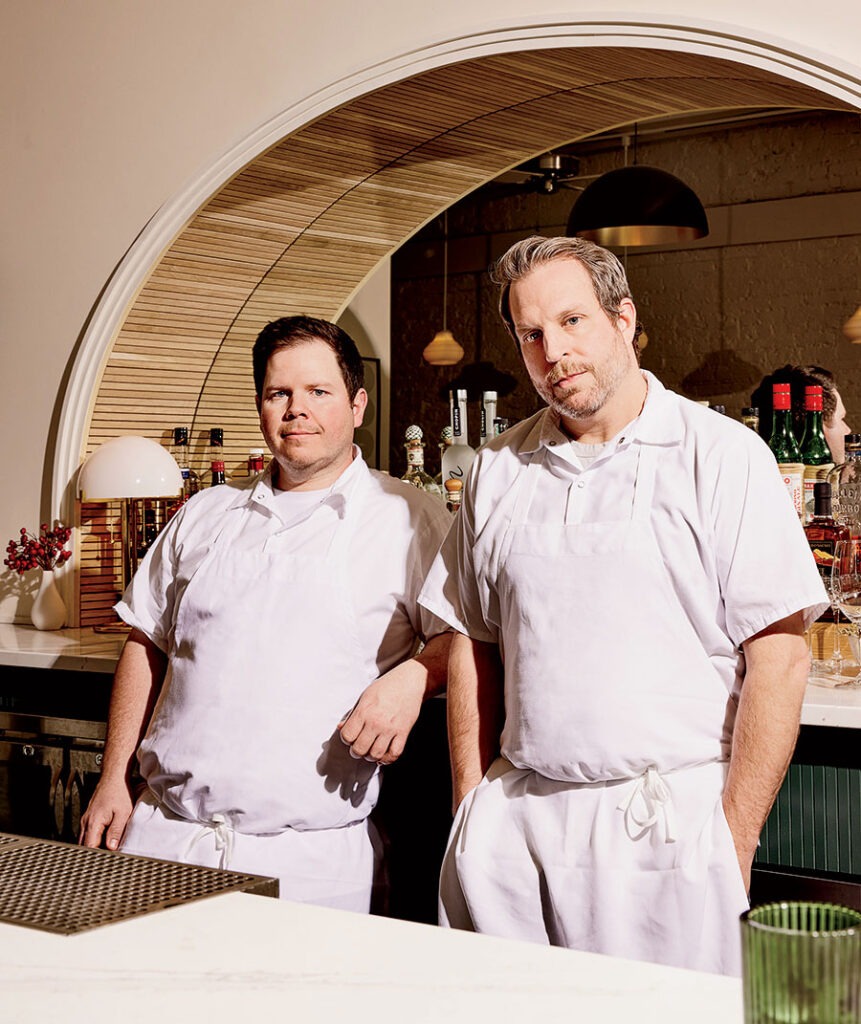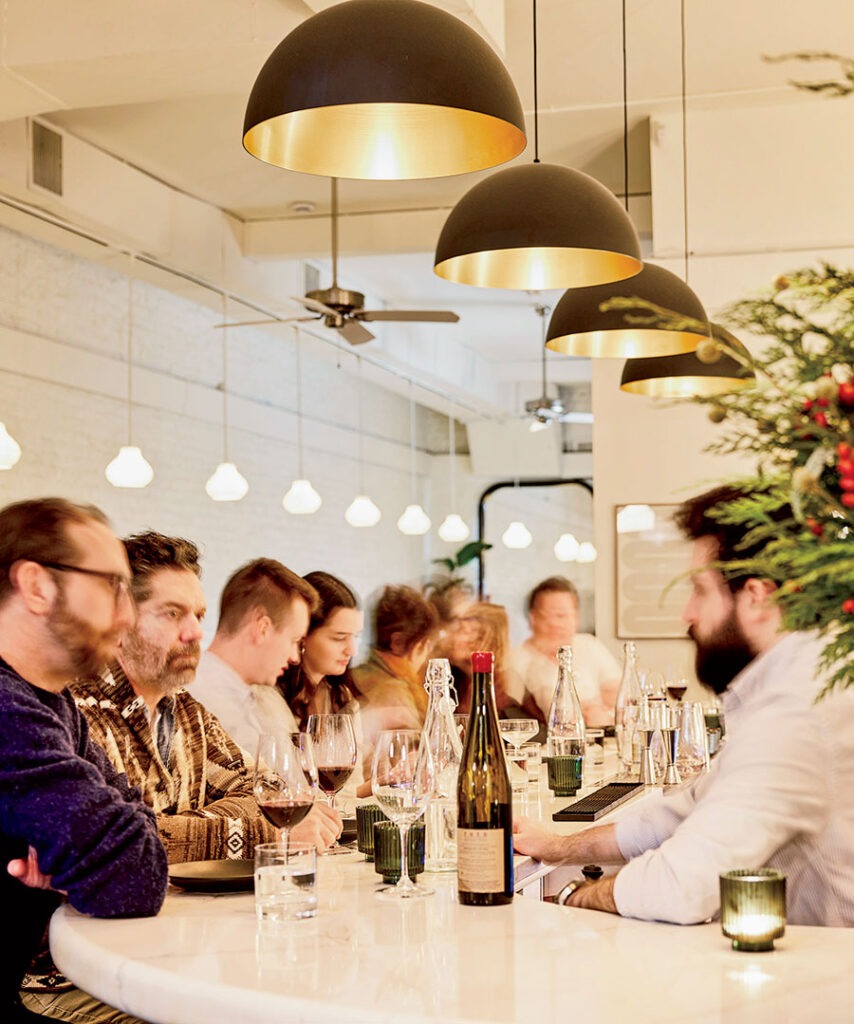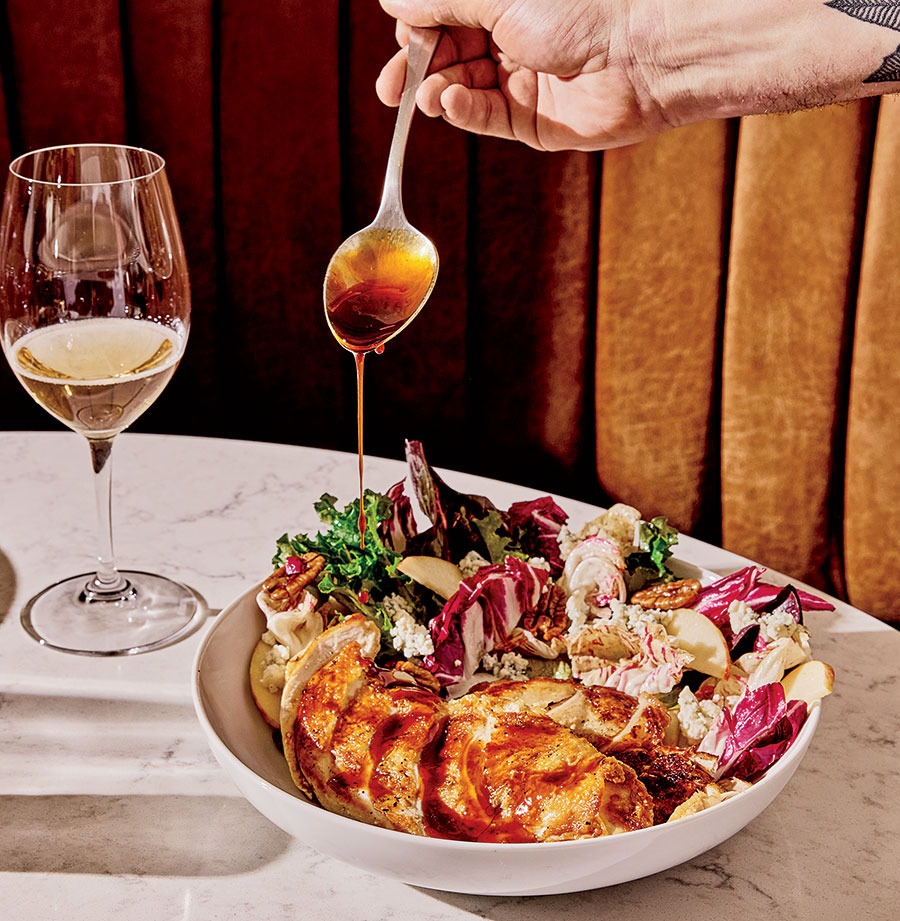It used to be easy to do a restaurant’s books. You’d budget a third of your expenses for food, a third for labor, and a third for overhead. Then you’d trim wherever possible and call that profit. Alas, this formula no longer works, particularly not in Chicago and other cities that have made the nettlesome decision to require businesses to pay all employees a living wage. As labor costs hit new highs, restaurants have to figure out ways to afford local hakurei turnips and then squeeze blood from them.
John’s Food & Wine, nestled in a boutique-heavy stretch of Lincoln Park, has made the odd but smart decision to keep its staffing costs down by employing a small crew and nixing designated servers. In the front of the house, there is an attendant at the till who checks you in and takes your order. This type of service usually goes by “fast-casual,” but there’s nothing casual about the meticulous lobster salad that comes out of this kitchen. Whatever you call it — fast-fancy? wham-bam bistro? — a meal here begins with a moment of cognitive dissonance and then hits its marks just right. On a busy night, you may have to wait in the front with a glass of wine, but when your table is set, you can order, take your place, and be stuffing your face within minutes. Even if the service hits snags — and it will — you’ll focus on this restaurant’s strength, which is its food.
Adam McFarland and Thomas Rogers, the co-owners and chefs, met in Chicago while working at Le Lan under Bill Kim, then worked as cooks at New York’s Gramercy Tavern. If you’re familiar with the casual fare served in that restaurant’s front room, you’ll see the through line to this menu, which uses a plainspoken vernacular that belies its culinary finesse and complex flavors. Sommelier Jonas Bittencourt (Asador Bastian) has assembled a rich and protean wine list full of cheeky annotations (he calls one skin-contact white “fool’s gold”) and fun surprises. Where else can you order a carafe of Super Tuscan red from an 18-liter bottle?

McFarland and Rogers, both in their early 40s and running their first restaurant, insist their efforts are collaborative. To underscore this, the name, John’s, honors both of their dads. Yet it’s the commingling of their voices and skill sets (like Coen brothers of the kitchen) that gives their food its oomph. McFarland can turn the season into salad. Beets, which can be so boorish, play along, with pistachio, yuzu, endive, chile, slivers of goat Gouda, and cuminy nigella seeds keeping them from tasting like sugar and dirt. Even better is a salad of bursting-with-juice celery and apples with roasted walnuts, mint, and a cloud of pecorino, floofy as a sheep.
Rogers handcrafts semolina pasta — the kind that’s extruded from a machine and then dried. His ruffle-edged mafalde meet braised lamb in a tomato sauce brightened with lemon and sharp pecorino. Then there’s his lumache, tossed with the best wild mushrooms of the season (chanterelles one time, black trumpets the next) and so thoroughly shingled with truffle slices that a roofer would be impressed. When you dive in, the steamy heat unleashes a beat drop of truffle intoxicant. It’s $44, but this generously portioned dish is a showstopper.
Sharing is caring, particularly when you’re ordering off a tight menu with the offerings spelled out nightly on a letter board by the counter. You order for the table and let the kitchen figure out how to course your meal. This emerging tight-menu format (think Warlord and Cellar Door Provisions) lets small, chef-driven restaurants avoid resorting to a tasting menu, and I’m all for it.
At lunch and on weeknights, you can usually order promptly at the counter. But if you have to wait, drink this place in: John’s is a classic storefront bistro, long and narrow with a backlit bar, wooden floors, and cream walls. To the left of the till stands that huge bottle (called a Nebuchadnezzar) of 2019 Le Cupole, a classic Tuscan blend.

Bittencourt’s approach to wine service is such a balm in this age of ounce-and-a-half tasting pours. He sparks imagination with his sobriquets, he favors Old World over New, and he offers some wines by the carafe or, if you must, the glass. How great to snag his attention, as I did one night while sitting at the bar eating juicy boneless chicken in a blue cheese sauce with apple-pecan salad. A Barbera had just the brassy personality needed. Another time, when a group of us were passing around silken chicken liver mousse with quince mostarda and lobster salad with creamy leek aïoli and “millions of herbs,” he recommended a bottle of Portuguese wine (Luis Seabra Granito Cru Alvarinho, $88) that the menu calls “Granite, Lemon, Chills” and I call yesssssss.
But Bittencourt wears two hats, functioning as the general manager, ringing in orders and fetching glasses. You order wine through a table QR code, which is a pity. Also, if there’s a problem, you have to flag someone. Once, my wife and I waited 25 minutes for our last dish before finding out it had never been rung in, so we left. The meal was delicious but ended with Cheetos at home.
I haven’t loved everything: Fried oysters didn’t have enough brine for their rich onion soubise, and a pork schnitzel got lost in a clumsy red curry sauce. But there has been one item I’ve loved beyond all reason, and that’s the fries. Rogers unleashes a multistep blanching and freezing process on his Kennebecs, rendering them nth-degree crunchy. I pronounce these the best french fries in Chicago; you may fight me, but I will win.
Order them with a remarkable pulled pork sandwich with Thai vinaigrette at lunch or with fried branzino at dinner and you’ll appreciate just how skilled Rogers and McFarland are at finding greatness in simple American fare. Let’s hope these two crack the code on service, because their recipe for success in the kitchen works brilliantly.



